|
Editorial Message
Dear Readers,
Welcome
to the February 2007 edition of Srijan and also the first edition for the
year 2007. We know it is late and but still it would not be out of place
to wish you all a great year full of creativity in thoughts, ideas and
actions.
We
have got some interesting articles covering a variety of topics just like
in the previous edition from both students and teachers alike. The topics
vary from time management to creative ads to Ö..
From
our side, we have collected some wonderful optical illusions as an example
of creativity. But first what is an Optical Illusion? According to
Artlex.com, an Optical Illusion is an
image that deceives a person, leading to a misinterpretation of its
meaning. Optical illusions can be found in nature as well as in art. Their
strengths rely upon various assumptions in which humans perceive optical
phenomena.
There
are many classic optical illusions. One of them is the magic cube or the
Necker cube (named after Louis Necker, a Swiss crystallographer who first
published his analysis of this design in 1832). Now look at the middle box
in the figure below. Which of its sides is nearest to you? Is it the one
made solidly green on the cube to the left or is it the green side on the
cube to the right, or is there no nearest side at all?

(Source:
www.artlex.com/ArtLex/o/opticalillusion.html)
More
people interpret a magic cube as the one on the left than the one on the
right. The major reason seems to be that people see boxes more often from
above than from below and thatís where the assumptions come in.
Another
related example is the figure below:
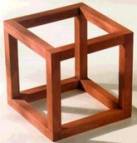
(Source:
www.artlex.com/ArtLex/o/opticalillusion.html)
Another
classic example is the Muller-Lyer illusion. Which of the horizontal lines
is longer?

Answer:
They are of the same length.
(Source:
www.artlex.com/ArtLex/o/opticalillusion.html)
We
tend to misjudge the length of such lines mainly because our experiences
have "taught" us to use certain shapes and angles to tell us
about size and placement.
Now
check out the next example. How many black dots can you count?
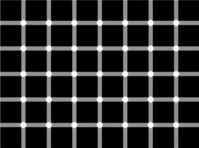
(Source:
www.artlex.com/ArtLex/o/opticalillusion.html)
The
illusory black dots that appear are afterimages. An afterimage is an
optical phenomenon in which the eye's nerves continue to convey an image
after an initial image has departed. This gridded figure is known as a
"Hermann grid," named after its designer. L. Hermann who
visualized it in 1870, while reading a book about sound.
Some
other interesting examples are shown below:
|
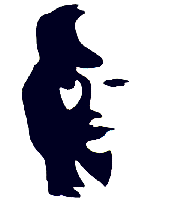
|
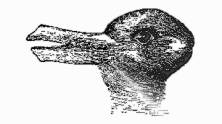
|
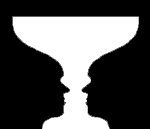
|
|
Saxophone
player or a lady?
|
Duck
or Rabbit?
|
Two
faces or a vase?
|
(Source:
www.norfacad.pvt.k12.va.us/puzzles/illusion.htm)
|
Magic
tap, which appears to float in the sky with an endless supply of
water. In actuality, there is a pipe hidden in the stream of water.
|
An
example of "same size" illusion. Although, in perspective
the sphere to the right seems larger, in reality both spheres are
exactly the same size.
|
(Source:
http://en.wikipedia.org/wiki/Optical_illusions)
We
look forward to more interesting articles and contributions from all
students and faculty members to make the next edition more interesting.
Hope
you will find the current edition enjoyable. Your feedback on the
different articles are invited at srijan.editor@gmail.com
With
best wishes,
The
Editorial Team
|